DEBORAH CROMBIE: It is always such a treat to have Stephanie Barron (who you also know as Francine Mathews) here on Jungle Red! Francine is multi-talented and I love her both her historical novels and her contemporary mysteries set on Nantucket, the Merry Folger books.
But her Jane Austen mysteries, written as Stephanie Barron, have a special place in my heart. I've followed Jane's adventures from the very first book, and am always thrilled when I know there is a new Jane novel coming my way. JANE AND THE YEAR WITHOUT A SUMMER is the 14th, and finds Jane and her sister Cassandra taking the waters at the new spa town of Cheltenham--a fun Cotswold link for me! But there is more than mystery going on in Jane's life--there is a little romance, too, as you will see.
Jane Austen’s Man
of Mystery: Raphael West
For the past twenty-six years, I’ve been
writing a series of mystery novels with Jane Austen as detective. The first, Jane
and the Unpleasantness at Scargrave Manor, showcased the famous English
Regency novelist in December, 1802, when she was twenty-six years old, and had
just accepted an offer of marriage from the twenty-year-old brother of her dear
friends Althea and Catherine Bigg. Harris Bigg-Wither, heir to the Hampshire
estate of Manydown, was in a position to make Jane’s life comfortable and
secure—one reason she probably agreed to marry him. But he was socially awkward
and suffered from a pronounced stutter, and Jane was not in love. After a
sleepless night, she descended the stairs to breakfast and retracted her
consent.
This
was such a social solecism in Austen’s day that she and her sister Cassandra
broke off their visit to the Biggs and left Manydown immediately to return to
their own home in Steventon. Jane was a jilt—someone who toyed with an
honourable gentleman’s affections and treated his heart with careless cruelty. But
she was also a woman of conviction, and we’re fortunate she refused to marry
for mercenary reasons. If she had become Mrs. Harris Bigg-Wither, mistress of
Manydown, we might never have known her name.
Accepting
a life of financial penury and dependence, as Austen did by refusing her one
documented offer of marriage, meant that she was thrown back on the resources
of her pen. If she’d married and succumbed to all the duties of managing a
great house and rearing its owner’s children, she would never have to publish her
novels. They would have remained an amusing pastime, like the amateur
theatricals she wrote as a young girl.
But
did rejecting Harris mean Jane’s life was completely devoid of romance?
I
say not. Emphatically not.
One
of the treats of writing historical fiction, particularly about famous people
(something I’ve done repeatedly in my thirty novels to date) is that I offer them
opportunities they may have missed in their real lives. One character who has
surfaced in the past three Jane Austen mysteries, most notably in the current
and fourteenth novel Jane and the Year Without a Summer, is Raphael
West—the handsome, sensitive, and intelligent artist Jane first encounters in
book twelve, Jane and the Twelve Days of Christmas. He’s the son of
famous Georgian painter Benjamin West, an American from Philadelphia who became
Court Painter to George III of England, and founded the Royal Academy in
London. A contemporary of Jane’s—a widower and father to a grown daughter—Raphael
quickly becomes Jane’s notable detective sidekick and love interest.
But
who was Raphael West, and is it possible Jane actually met him?
And
why did I decide to make Raphael a character in my ongoing series?
Jane
herself showed me the way:
I have seen West’s famous Painting, & prefer it
to anything of the kind I ever saw before. I do not know that it is reckoned superior to
his “Healing in the Temple,” but it has gratified me much more, &
indeed is the first representation of our Saviour which ever at all contented
me. “His Rejection by the Elders” is the subject.—I want to have You and
Cassandra see it.
--Jane Austen in a letter to
her friend and housemate Martha Lloyd, date Friday 2 September 1814, written from
London
Christ Rejected by the Elders, Benjamin West, 1814
It was clear
from this passage that Jane not only saw this painting of Benjamin West’s,
she’d seen several. This isn’t surprising; West was the most famous painter in England
of large-scale historic scenes throughout Austen’s life. His “Death of Nelson”
and “Death of Wolfe,” depicting idealized and quasi-religious ends for two of
Britain’s great war heroes, were hugely important propaganda pieces in
contemporary politics. Remember, this was an era when there were no
photographs, and popular understanding of events was spurred by graphic prints
and cartoons sold in the streets, or by traveling exhibits of spectacular works
of art.
But
West was unique for the time in his brazen self-promotion and hustle. For
forty-five years, he operated a multi-use compound at his home in the
fashionable West End, at 14 Newman Street. This was a block of houses
newly-built as London expanded during the Georgian era, and West both lived in
his modern row house and set up his studio there—along with an atelier for art
students under his tutelage, many of them American, and a gallery where he hung
and sold his work. He was not simply an artist; he was an entrepreneur, and
he capitalized on the public enthusiasm for his great works of history by
flogging his paintings to anyone who cared to ring the bell at 14 Newman.
In
other words, you suddenly didn’t have to be a king or emperor to be an art
patron; you could be any person with money and taste, and you, too, could own a
Benjamin West.
When
Jane writes that she’s just seen “Christ Rejected by the Elders,” it’s possible
she attended a public exhibition. But it’s equally probable that she saw it in
the gallery at Newman Street—the painting was executed in 1814, and West would
have wanted to exhibit it in his own gallery. Which means that Jane may, in
fact, have encountered Benjamin West’s eldest son, Raphael, at 14 Newman Street.
Of West’s two sons, Raphael was his father’s right-hand man.
Art
at this time was very much a studio product, meaning that Raphael and the
students in his father’s atelier made sketches and studies for the subjects of West’s
great historical tableaux. Raphael never achieved the artistic status of his
dad, but he was definitely a significant part of the family business. I own a
catalogue of his drawings, many of them sketched during a trip he made to the
United States, and his hand is deft and sure. He also surfaces in promotional
ads in London papers from 1820, when his father died, and the entire West stock
was being sold—along with the Newman Street house.
It's
difficult to find much in the historical record about Raphael. I know he was
married and had at least one daughter; I know he emigrated to France with his
father for a period of several years after the Revolution, which makes him
useful as a quasi-spy against Napoleon, whose transition from Man of the People
to dictator disillusioned the whole West family. I also know he was handsome:
his portrait, painted by his father, shows him as a man of fashion who’d make a
perfect Darcy in an Austen novel.
In
Jane and the Year Without a Summer, we’ve reached 1816 in Austen’s life.
It’s a wretched time in England—the economy has plummeted due to the end of the
Napoleonic wars, and there’s a famine throughout Europe and North America due
to a catastrophic climate event caused by the most massive volcanic eruption in
recorded history. Jane’s family is in upheaval: her brother Charles has lost
his ship in a hurricane and he may be court-martialed; her brother Henry’s
banks have failed, leaving him destitute; and her wealthy brother Edward is
being sued by Jane’s neighbors for wrongful inheritance, or fraud. Jane herself
is feeling ill, and decides to run away to the spa town of Cheltenham with her
sister, Cassandra, for a bit of R&R.
Raphael
West visits Cheltenham at the same time—and sparks fly as the pair stumble over
an unfortunate series of bodies.
I
like to think these two intriguing Creatives found endless subjects to discuss.
Maybe it’s only a product of my fevered imagination—but Jane Austen deserves,
at any time in her brief life, a partner worthy of her intelligence.
Stephanie Barron is a graduate of Princeton and Stanford, where she received her Masters in History as an Andrew W. Mellon Foundation Fellow in the Humanities. Barron is perhaps best known for the critically-acclaimed Jane Austen Mystery Series, in which the intrepid and witty author of PRIDE AND PREJUDICE details her secret detective career in Regency England. A former intelligence analyst for the CIA, Stephanie--who also writes under the name Francine Mathews--drew on her experience in the field of espionage for such novels as JACK 1939, which The New Yorker described as "the most deliciously high-concept thriller imaginable." She lives and works in Denver, CO.
DEBS: Don't you love the idea that Jane Austen, whose heroines always met their match, had a handsome and witty flame of her own? It's a delicious set up, and a fascinating period.
Do stop in and chat with Stephanie--if you have any Jane Austen questions, here's your chance to ask them!


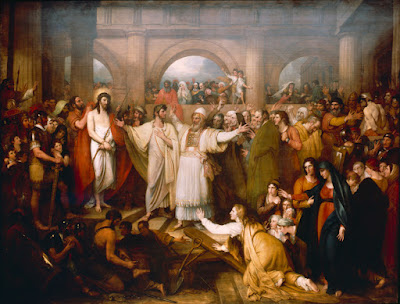
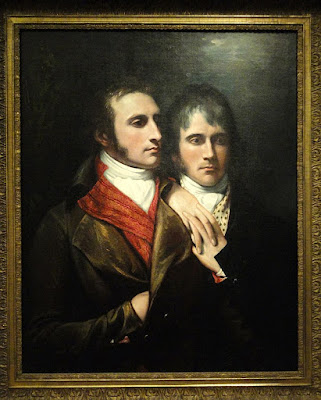





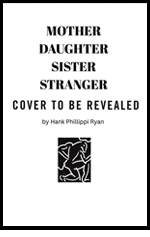
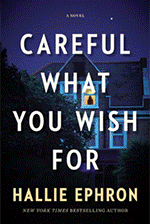
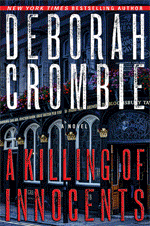
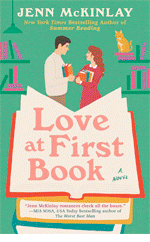
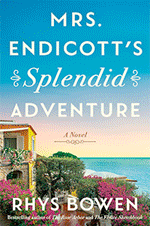
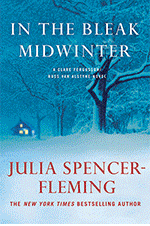
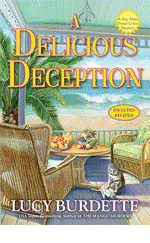
This comment has been removed by the author.
ReplyDeleteCongratulations, Stephanie, on your newest Jane Austin book . . . I love the idea of Jane and Raphael meeting up with each other and I’m looking forward to reading their story . . . .
ReplyDeleteEnjoy, Joan!
DeleteI find those kind of what ifs to be very fun. Sounds like you are having a lot of fun creating them and playing with them.
ReplyDeleteI love historical "what-ifs," Mark--I've been playing with them for a while, not just with Jane, but with Jack Kennedy, Queen Victoria, Ian Fleming, Virginia Woolf...there are always moments in the known life that could have gone a different way.
DeleteI'm ashamed to confess that I haven't read a single one of your Jane-as-detective books. Ah, it's always so exciting to be introduced to a new series and know that, if you like it, you'll have one book after another to look forward to for years to come. So thank you, Stephanie, for getting me excited about this and your previous books. And thanks for reminding me about Benjamin West, whom I first met in a wonderful children's book called "Benjamin West and His Cat Grimalkin," by Marguerite Henry (1947). Anyone remember it? My sister and I named our childhood cat Grimalkin because of that book.
ReplyDeleteKim, I remember that book! Now I'll have to look it up!
DeleteOh, I LOVE this!
DeleteThere is a new edition!
DeleteCongratulations on the new book! What a great - and entirely plausible - sidekick and romantic partner to include.
ReplyDeleteAfter I included Elizabeth Cady Stanton in one of my historical novels, people asked if she actually came to Amesbury (MA) in 1888 to rally the cause of women's suffrage. I don't know that she did, but she well might have.
And you got people thinking, and possibly researching, which is all we really want!
DeleteYou have clearly done a lot of research about the Wests, Stephanie! What a fascinating period of history in which to place a story.
ReplyDeleteI so agree that Jane Austen deserved someone whose mind and imagination were as nimble as her own. How charming, to have found one for her!
It's remarkable what you can find when you go looking, Karen. I stumbled over a Scottish doctoral candidate's thesis, for example, which was an entire study on 14 Newman Street as "art palace," exploring the entrepreneurship of Benjamin West. That kind of thing is invaluable.
DeleteBet that was a fascinating rabbit hole to explore.
DeleteI am constantly diving down far too many rabbit holes. Don't get me started on the research i did for my standalone historical novel, THAT CHURCHILL WOMAN.
DeleteCongratulations, Stephanie! Sounds like you've done a lot of work to ensure a plausible - and fun - relationship between Austen and West.
ReplyDeleteIt's been good to watch it develop across the last three novels.
DeleteSTEPHANIE: Congratulations on your latest Jane Austen book! I must admit I have never heard of Raphael West or his famous father. It's great that you found a way for Jane and Raphael to meet up at the Cheltenham Spa. But as a (retired) climatologist, I do remember reading about 1816 in university. It was indeed a year of climatic anomalies across the globe, hence your book's title has multiple meanings.
ReplyDeleteAbsolutely! 1816 was so dreadful, both in Europe and in Jane's family life, that it offered constant avenues to explore while writing the book. It has come down to us as the last Frost Fair in London during the winter of 1815-1816, when the Thames froze, and as the summer Mary Shelley drafted Frankenstein--marooned by a fire in a villa on Lake Geneva with Byron, telling ghost stories because it was too cold to venture out. An apocalyptic year.
DeleteI absolutely love this! The idea of “it’s possible “is so intriguing! And that you give her another chance at happiness, it’s really…touching.
ReplyDeleteThis is fascinating… Thank you so much! Going back to read your blog again now, so much intriguing information. you must feel like you know her a bit… When did you “meet “her?
When did I meet Jane? I first read Pride and Prejudice at age 12, and it made immediate sense to me, because I'm the last of six sisters. Nobody likes to think she's Lydia Bennet--we all want to be Lizzie--but the dilemma of a family of girls looking for their destinies certainly resonated.
DeleteI am a great fan of your Nantucket series. Congratulations on your latest Jane Austen, I am happily about to start making Ms. Austen's acquaintance, thanks to you.
ReplyDeleteOh, I hope you have fun with this! I personally think the series improves from book to book--the first one was quite definitely an experiment on my part, to see whether I could successfully throw my voice in what I call "Austenese," but over time it has become natural. These are first-person narratives, so the voice echoes the tone of her intimate letters, although it also mimics that of her novels in places.
DeleteI love these books, Stephanie. I’ve always been a huge Austen fan ( maybe because I was born in Bath!) and I think you really know her!
ReplyDeleteHave you visited the Jane Austen museum in Bath? Small but interesting
Yes, I've walked in Jane's footsteps throughout England--she was quite peripatetic for much of her life, moving from Hampshire to Bath to Southampton and back to Chawton, with constant side trips to Kent and London in between. I've set a book in each of these places, plus others we think she may have visited (Derbyshire) although the historical record is uncertain.
DeleteCongratulations on the new Jane book. I am excited to see this news. It's a series I have thoroughly enjoyed. This is historical fiction in the category of: "We don't know that it happened...but we don't know that it didn't." Right there is the space to tell a great story. Love it!
ReplyDeleteYes. I love filling gaps in the known record--the current book is one of those, because there's very little known about the Cheltenham visit; Jane's favorite pen pal was her sister, and when Cassandra was with her, there were no letters to save! But I've also used certain letters as complete templates for novels. Jane and the Man of the Cloth is one of those, set in Lyme Regis (where she set her final novel, Persusasion). Every character she mentions, and her entire schedule for a period of two weeks, became my framework for the novel. It's a mosaic of fact and fiction.
DeleteI'm wondering, Francine, if at the beginning of the series you contemplated that you might be writing all the way through Jane's life? And all the possibilities therein! I have loved the previous two books especially, with Raphael West.
ReplyDeleteI don't think any of us knows where a series will take us, Debs. Did you foresee the evolution of Duncan and Gemma's life, back in that year when you and I were both writing our first novels? It's fascinating to me how characters rise up and direct their own outcomes, their own futures. Or not. One of my most beloved characters, Lord Harold Trowbridge, unexpectedly exited the series by his own decision--he informed me of it, himself. And I was forced to cope. I certainly hadn't outlined his departure.
DeleteI am a great fan of all your books, Francine. The Year Without a Summer just arrived, and I cannot wait to read it. I'm a historian by trade, and just had occasion to look into Benjamin West's activities on Newman St. for my work, so with that background fresh in my mind, I look forward to meeting up with the fictional Raphael again. Jane and the Twelve Days of Christmas was one of your very best efforts in the series.
ReplyDeleteI LOVE Jane and the Twelve Days of Christmas, too. One of my favorites in this wonderful series.
DeleteOh, I'm so glad to hear this! Another student of Benjamin West! I would give anything for 14 Newman Street to still exist as a museum. If you haven't read it already, search for the doctoral thesis by Kaylin Haverstock Weber, University of Glasgow, "The Studio and Collection of the 'American Raphael,' Benjamin West, P.R.A. It's so worthwhile.
DeleteSTEPHANIE,
ReplyDeleteWelcome to Jungle Reds! I am so glad to see you here. Congratulations on the new novel and I loved the book. I was fortunate to win a early copy of JANE AND THE YEAR WITHOUT A SUMMER from Goodreads. I saw a movie about Jane Austen starring Anne Hathaway and I noticed that her brother George was deaf. They communicated in Sign Language. Is it fiction or is there a kernel of truth in this? I remember watching Pride and Prejudice on PBS when I was in middle school. At university, I became more aware of Jane Austen as an author.
Diana
George Austen was regarded as mentally deficient, and was placed in care along with an uncle who was disabled, and after infancy did not live with the Austens; he is never mentioned in Jane's letters or by anyone in the Family Record that has come down to us from her nephew. This is the harsh reality of life for those who were "differently-abled" in the Georgian era. I suspect that scene in Becoming Jane Austen is fictional.
DeleteWhoa! I am so behind, Stephanie! I have loved the Nantucket books and didn't even realize there is a whole other fascinating side to her author! I best get busy with book one now.
ReplyDeleteHave fun! The tone of this series is quite different from the Merry Folger books, but I've loved writing them both. I have a Nantucket book out November 1--DEATH ON A WINTER STROLL.
DeleteI was just going to ask about a new Merry! Yay!
Delete
DeleteWonderful news! That last one was sooo good!
Stephanie, I love this idea of finding a real person to come into Jane's life--and yes, she certainly deserved having an accomplished, creative (and handsome, to boot!) partner in her life. The title caught my eye earlier--it alone gave me the nudge to dive into this series.
ReplyDeleteA question for our JRW community: are there any contemporary authors of what I would call gothic romantic suspense? As a young woman I loved authors like Victoria Holt, Madeleine Brent, Jane Aiken Hodge. A strong heroine in peril, story set in the past. Some of those books, I think, still hold up upon re-reading today, but is anyone writing something similar these days? Thanks!
That's such a good question, Flora, and I'd love suggestions as well. I read Holt and Mary Stuart and Barbara Michaels (Elizabeth Peters in her gothic guise.)
DeleteLauren Willig and I talked about this the other day in a virtual event for Houston's Murder by the Book. We both read and loved Mary Stewart and Victoria Holt as middle-schoolers; Lauren was noting that she can't imagine her daughter doing the same in a few years. So much YA fiction now is about empowering girls and women. The Gothics were more about jeopardizing them, with convenient male saviors. It'd be nice to get that Gothic vibe in an updated version!
DeleteI can't even count the number of times I've read Pride and Prejudice and wondered about the woman who hatched such unforgettable characters and who took such a jaundiced view of money and romance. I love the idea of turning herinto a mystery sleuth. Congratulations on the new book, Stephanie. I wonder if, when you landed on JA as your hero, you considered other female authors for the role?
ReplyDeleteYou know, Hallie, Jane chose ME. When I sat down to write the first book back in 1994, I was pregnant--which I personally found to be a semi-hallucinatory experience. I was out-of-body or mind half the time, and I was hearing voices. One of them was Jane's. I'd been reading her books, and started speaking like her. It hit me that her particular voice is so immediately identifiable--and her language so rich with meaning--that it would be a treat to throw my voice as Jane. But I knew I'd have to give her a compelling suspense plot in order to persuade readers to come along for the ride. Hence the decision to cast her as a detective. The Regency period and Napoleonic wars were my focus as a history major, so I already knew a good bit about the period. It's a great era to use--full of espionage, bloodshed, revolution in mores and culture. It's been wonderful to escape to it periodically over the past three decades.
DeleteFrancine, welcome to JRW and congratulations on your latest Jane Austen mystery. I devoured the Merry Folger Nantucket mysteries at the beginning of the pandemic. She is one of the most compelling heroines in any mystery series. However, I have not begun to read the Jane Austen mysteries, yet. Knowing that I am 14 books behind is both good and bad. Bad, because it means that I must catch up. Good because it means that I have 14 books to look froward to reading.
ReplyDeleteThank you for the Jane Austen history lesson and also including so much background on the Wests. Although I have seen some of these paintings, I really knew nothing about the artist and his family. I'm looking forward to beginning your series.
I almost envy you the journey, Judy! Enjoy!
DeleteI am a LONG-time fan of Stephanie/Francine's Jane Austen mysteries, partly because I am a huge Austen fan (who isn't?) and partly because they feel so historically grounded. Seeing the trail of research, history and plausible speculation laid out here is such a pleasure.
ReplyDeleteThe Year Without a Summer is also a fascinating historical event, and one that's particularly relevant to our day - not that we're liable to freeze, but as evidence of the wide-scale devastation a change in climate can wreak.
Yes!! It was a peculiar experience to write this book during the pandemic. I felt so isolated, and the world has felt so apocalyptic, that it was almost comforting to immerse myself in a time two hundred years ago when the world also felt like it was ending. Britain's economy had tanked once the Napoleonic wars were over, and the labor market was flooded with unemployed men returning from their roles as soldiers and sailors. The climate impact of the Year Without a Summer caused worldwide famine and bread riots. Everything was in flux--and people were depressed. Not unlike our reaction to events we cannot control, these past several years.
DeleteI was also intrigued to find a connection between Jane and vaccination while researching this book. The British father of the smallpox vaccine, Dr. Edward Jenner, spearheaded the practice of what he called "innoculation," in Jane's era. Her elder brother James was a friend of Jenner's, was vaccinated, and had his family vaccinated. Jane's lifelong friend and mentor Anne Lefroy was a huge proponent of Jenner's methods--she used to read his pamphlet on vaccination aloud at social gatherings--and personally vaccinated her clergyman husband's entire parish. It seems clear to me that Jane was probably vaccinated, too. She and Cassandra went to Cheltenham in part because Edward Jenner lived and practiced there.
This was fascinating, and certainly believable. Deb Harkness explored smallpox innoculation, too, in the Revolutionary War portion of her novel, Time's Convert.
DeleteLOVE a Discovery of Witches trilogy
DeleteMe, too, Francine. I've read and reread them. And listened and re-listened, lol.
DeleteI love the idea of Jane having a worthy companion of her intelligence and I can't wait to dive into their latest adventure. Your mysteries capture the era so beautifully. Side note: it always shocks me that her novels were first published as "by a lady" without even her name on them! Argh.
ReplyDeleteYes, Jenn, she was anonymous until her exuberant and beloved brother Henry let the cat out of the bag. He was recreating on a grouse moor in Scotland just after Pride and Prejudice was published, and when he saw the ladies of the party reading his sister's book, he couldn't resist telling them she'd written it. Jane herself, however, hated being revealed as a writer--she felt it exposed her to the neighbors in her village, and elsewhere, who would constantly be on their guard in her presence, lest she capture their quirks for her characters. She was also self-conscious about her reputation--"ladies" didn't perform to strangers for base coin. Her famous words: "If I am a wild beast, I cannot help it," refers to this--she felt like an animal at the zoo after her authorship was known, with spectators lining up to view her like an exotic oddity.
DeleteJane with a gentleman friend who is her intellectual equal! Love it. Congratulations on your new release.
ReplyDeleteThank you so much!
ReplyDeleteI love this series and will miss dear Jane. I have the book on my nightstand and am saving it for a quiet, cold weekend at home. I confess that I have forgotten all about Mr. West. I miss the Gentleman Rogue. It will be difficult to finish the book though knowing how ill Jane was and how she would only live a short time longer. She wasn't the only author to publish annonymously. It wasn't because she was female- she greatly admired Fanny Burney and Maria Edgeworth (both of whom were married) and Hannah More, a Quaker, was a popular writer of religious and moral stories for children. Samuel Richardson published his famous first novel Pamela, annonymously in 1740/1. It was later, in the Victorian era, when women hid their identities behind male pseudonyms (the Brontes, George Eliot, George Sand).
ReplyDeleteI absolutely love the Jane books and have introduced several of my friends to them. You have created a fascinating story that combines history with fiction. Your attention to detail helps us all get the real feel of the era and the life of Jane Austen. Thank you!
ReplyDelete